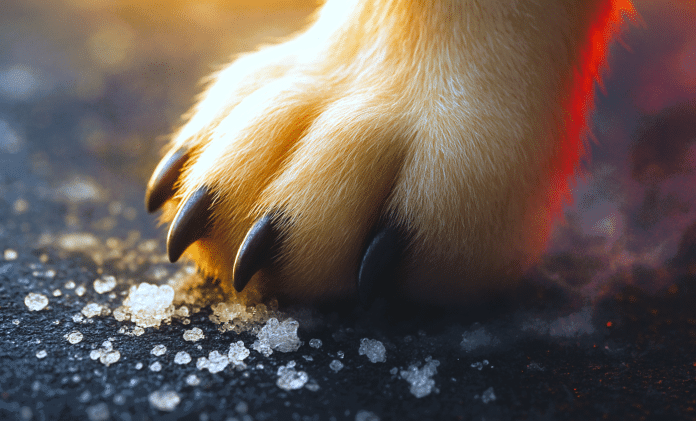Seattle, WA – As the first frost and freezing mornings arrive across western Washington, veterinarians are urging pet owners to stay alert for a seasonal hazard that’s easy to overlook: road salt and chemical de-icers. These substances, used to prevent icy sidewalks and slick bridges, can burn paw pads, irritate skin, and cause toxic reactions if pets lick or ingest them.
Most de-icing products contain sodium chloride, magnesium chloride, or calcium chloride, chemicals that melt frost and ice efficiently but are harsh on dogs’ paws. Even brief contact can lead to dryness, cracking, or redness. When pets lick their feet afterward, they can swallow salt residues that cause vomiting, diarrhea, excessive thirst, or lethargy. In more severe cases, veterinarians warn, salt ingestion can result in seizures or kidney problems.
While snowfall is light in much of western Washington, transportation crews often use de-icers and brine solutions during overnight freezes. Some products also contain industrial additives or heavy metals, which can increase toxicity risks when pets are repeatedly exposed.
Veterinarians recommend rinsing a dog’s paws with warm water after each walk and drying them thoroughly. Applying a protective paw balm or wax before going outside can reduce irritation, and trimming fur between the toes helps prevent buildup. Booties can also protect paws from salt exposure, though not all dogs tolerate them. Pet owners are encouraged to use chloride-free, pet-safe ice melts on their own driveways and porches.
With overnight lows dipping into the 20s and 30s across the Puget Sound and Cascade foothills, veterinarians urge pet owners to limit outdoor time during the coldest hours and to watch for limping, licking, or hesitation—early signs of salt irritation or chemical burns.
As Washington faces its first frost and ice of the season, experts remind residents that the biggest winter danger to pets isn’t always the cold air—but the chemicals used to combat it.





